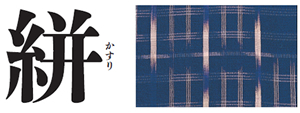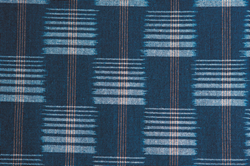niponica is a web magazine that introduces modern Japan to people all over the world.
2013 No.11

To read the e-book you need to have JavaScript enabled in your browser and a free Flash Player plug-in from Adobe Systems Inc. installed.
Japanese Fabrics Have Their Global Reputation Wrapped Up

Dyeing and Weaving
Japan's textile culture—Shaped by a rich array of techniques

The patterns in kasuri fabrics are woven from dyed threads rather than created by dyeing woven cloth. This technique makes it possible to create colorful, intricate designs as well as lattice and other patterns using even the simplest weaving techniques. Kasuri literally translates as grazed, and this style takes its name from the grazed edges of the patterns.
Collaboration: Ginza Motoji and Kurume Gasuri Cooperative Photos by Takahashi Hitomi

The appeal of Kurume gasuri dyeing lies with its simple but powerful designs. Developed primarily in the Kurume area of Fukuoka Prefecture, these patterns were adopted for clothing worn by common folk and later spread to regions across Japan.
Left: Before the fabric is woven, the thread is bound with hemp (lower right), separating sections left undyed to form a white pattern and sections to be shaded in light to dark indigo (left).
Right: A kasuri pattern originating from Tottori Prefecture, Yumihama gasuri is dyed and woven into cotton cloth used to make work clothes and futon covers.









